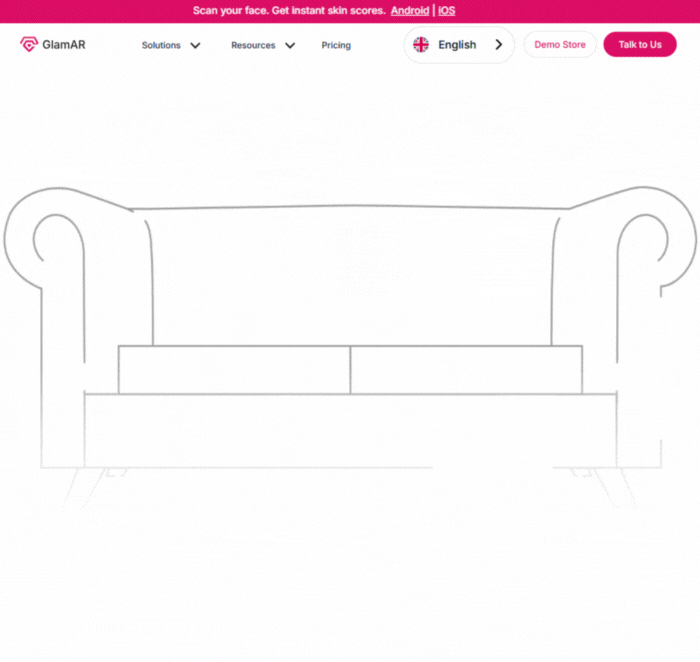Augmented reality developer for enhancing product experiences of e-commerce & retailers


3D product viewers

.gif)
Virtual try-on experiences
Easy configuration & integration

Frequently asked questions
An augmented reality developer is a software professional. The developer creates applications and experiences that overlay digital content, such as images, 3D models, and animations, onto the real world. They use their knowledge of programming languages like C# and C++. Also, they require development platforms, such as Unity or Unreal Engine, to design, build, and test interactive AR solutions for websites and apps.
An AR developer should have strong technical and creative skills: 3D modeling, computer vision, and spatial mapping expertise. They should possess proficiency in programming languages like C#, C++, or JavaScript, along with experience in AR/VR frameworks such as Unity, Unreal Engine, ARKit, and ARCore. They will also need a detailed understanding of UI/UX design principles, real-time rendering, and animation. It can further enhance their ability to create interactive AR experiences.
AR developers can create AR experiences with the SDK and API integrations. For this, they need reliable AR platforms, such as ARKit, ARCore, Unity, or Unreal Engine. First, they design solid 3D models and digital assets of your products. Then, they will integrate them into real-world environments through motion tracking, spatial mapping, and scene understanding. Developers use real-time rendering to make the virtual elements interact with physical surroundings. Plus, they add animations, gestures, and device sensors, like GPS or cameras, to enhance realism and interactivity. As a result, you can create interactive, engaging, and responsive AR experiences for your shoppers.
AR developers use multiple tools and frameworks to design, develop, and launch interactive AR experiences. Tools, like Unity 3D and Unreal Engine, to build interactive 3D environments, ARKit and ARCore for mobile AR applications, and Vuforia for image and object recognition. Sometimes, they use Blender, Maya, and 3ds Max for 3D modeling and animation. Developers may also use Adobe Aero and Spark AR for lightweight AR projects. The tools enable them to easily integrate digital content into real-world environments. It will feature accurate motion tracking, realistic rendering, and smooth customer interaction across different devices and platforms.
Augmented reality developers can integrate AR with other advanced technologies. It will create powerful and interactive experiences. Combining AR with AI, developers enable object recognition, gesture control, and predictive consumer interactions. They integrate IoT with AR applications to make your customers visualize real-time data from their connected devices. They use cloud computing technology for large-scale AR processing and collaboration. On the other hand, blockchain technology allows them to provide secure data sharing and asset tracking solutions. AR combined with GPS and geolocation technologies enhances location-based experiences: navigation, retail, or tourism applications. It will make AR environments smart, personalized, and engaging for your customers.
AR developers can create interactive digital experiences for different sectors, including yours. They play an important role in the gaming industry in designing engaging and realistic gameplay environments. The retail sector uses AR for virtual try-ons and product visualization. At the same time, education benefits from its interactive learning tools. In healthcare, AR supports medical training and surgical simulations. The real estate industry employs AR for virtual property tours. On the other hand, manufacturing industries use it for equipment training and maintenance. Also, the marketing and advertising industries use AR to create captivating campaigns. It will enhance customer engagement and brand interaction in innovative ways.
















